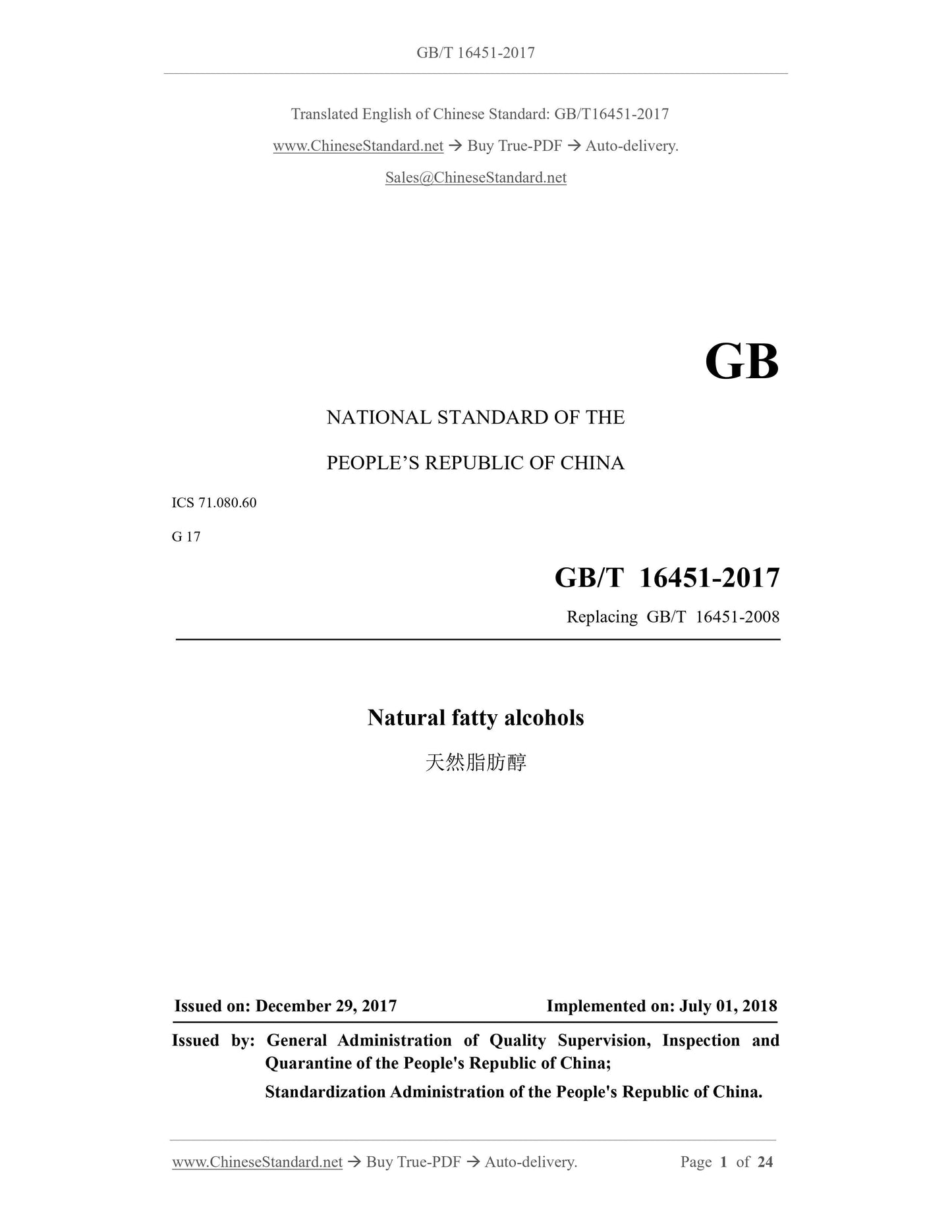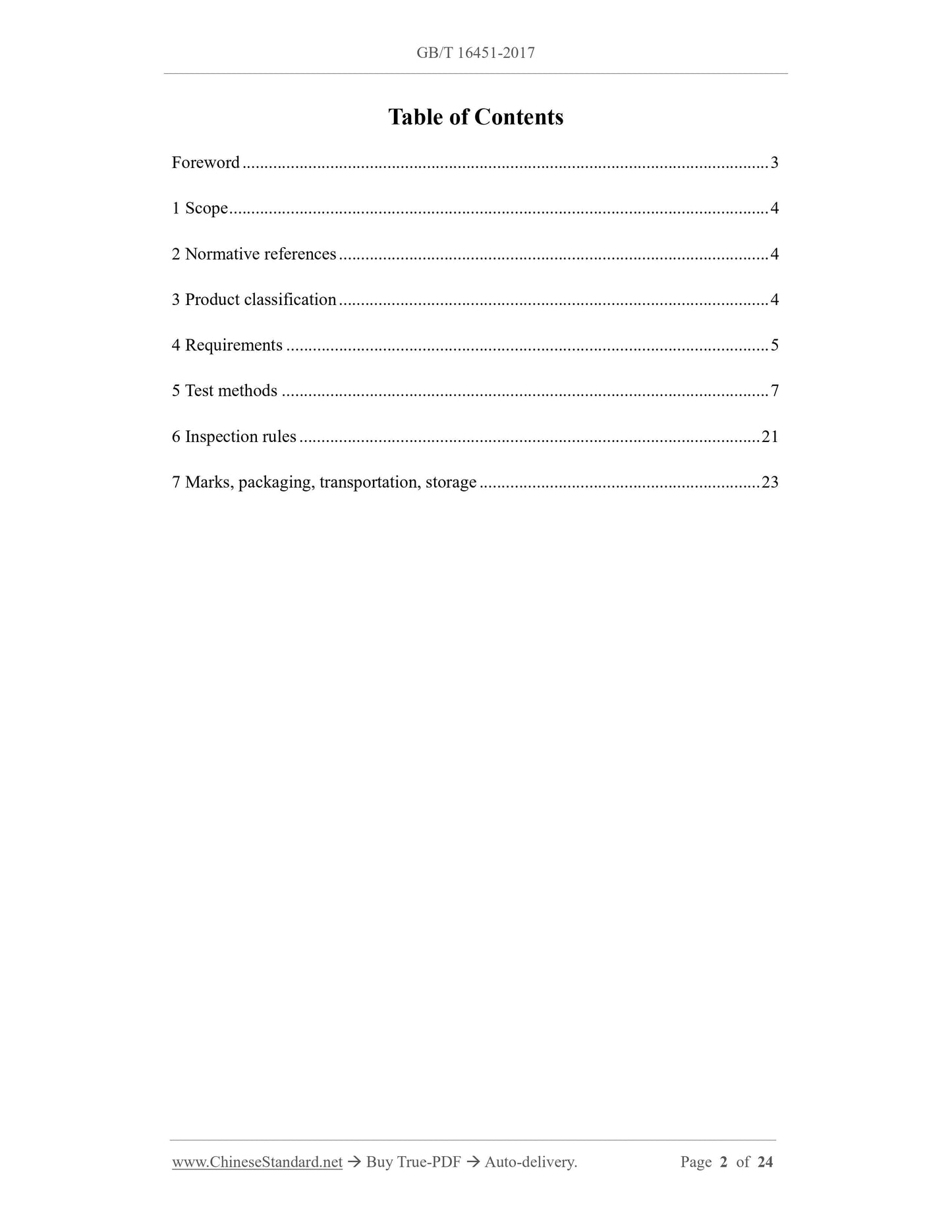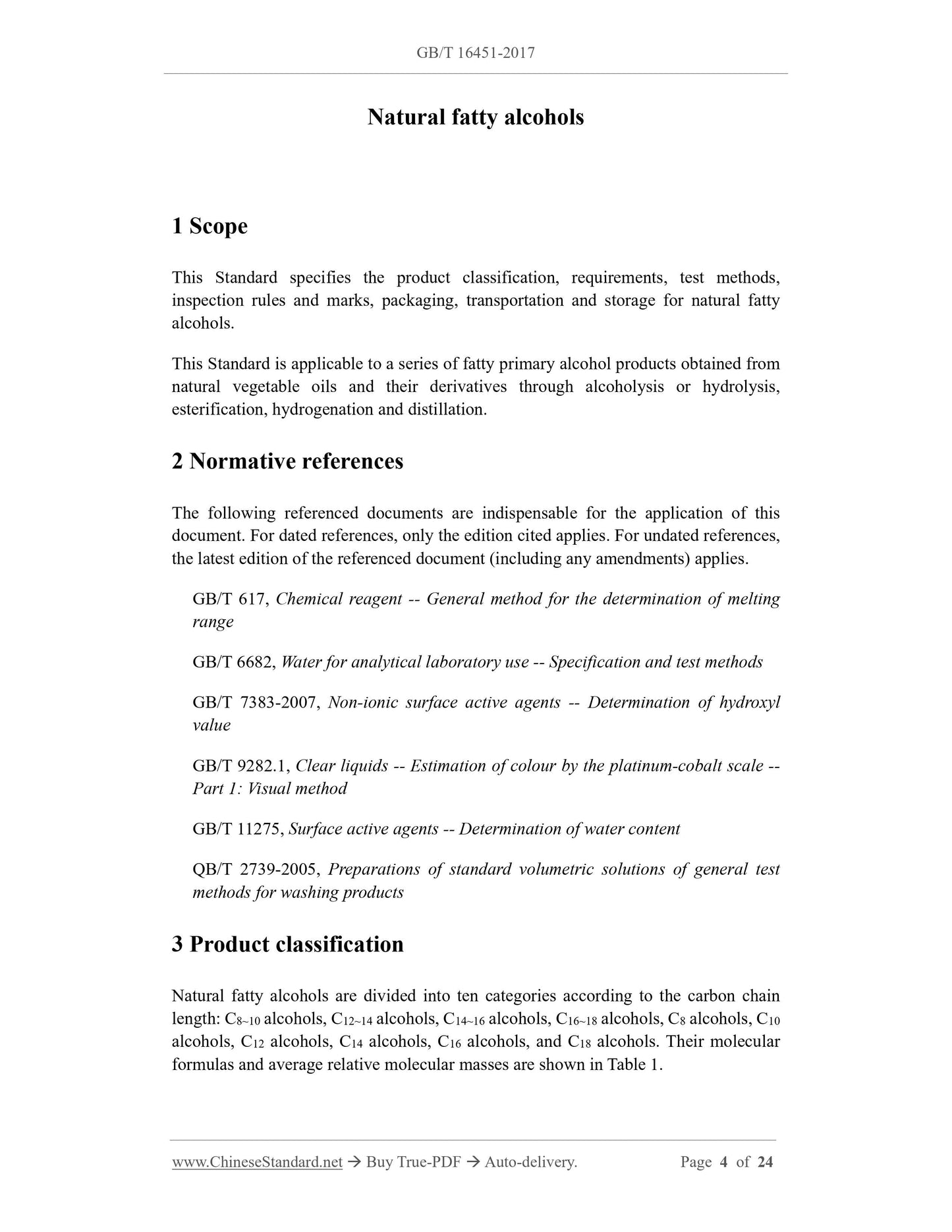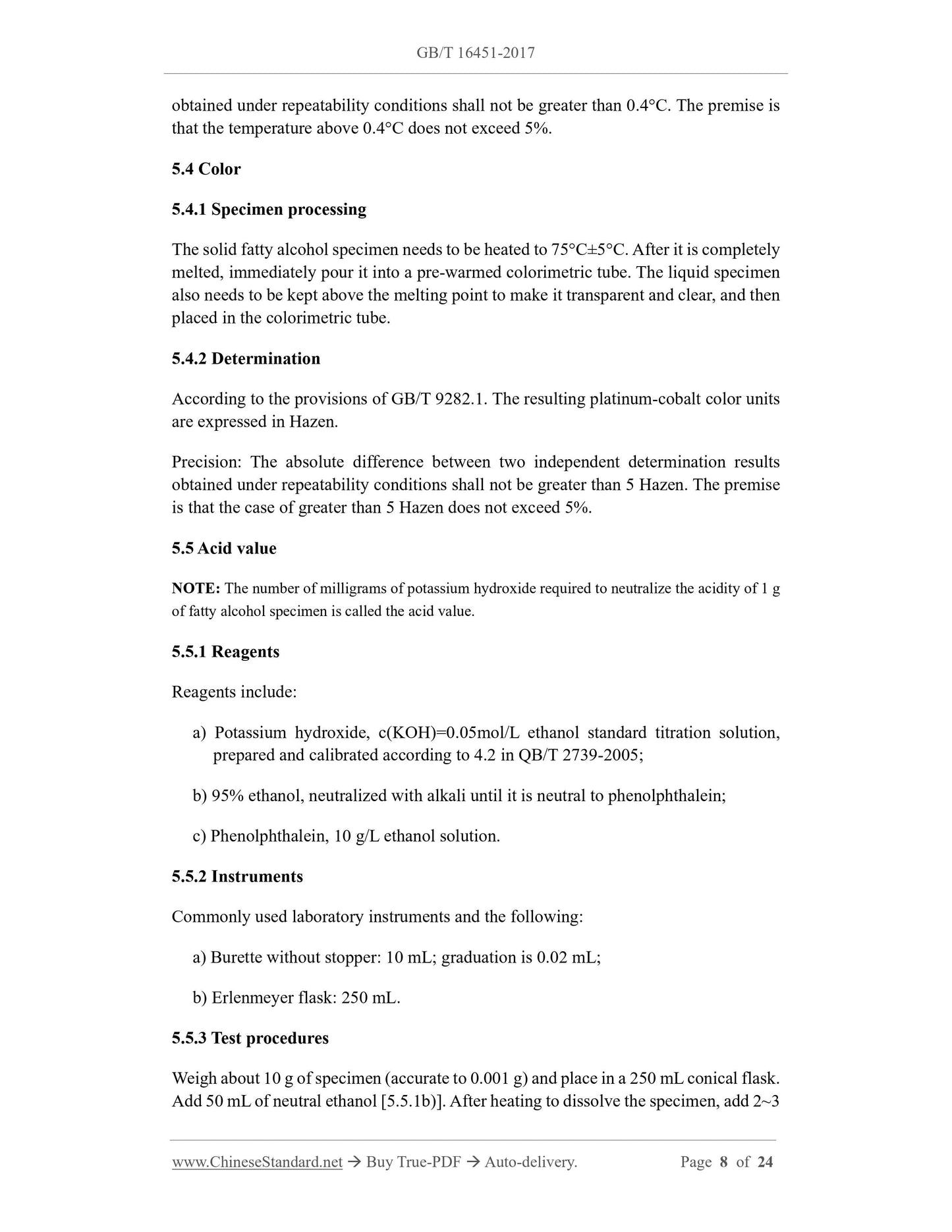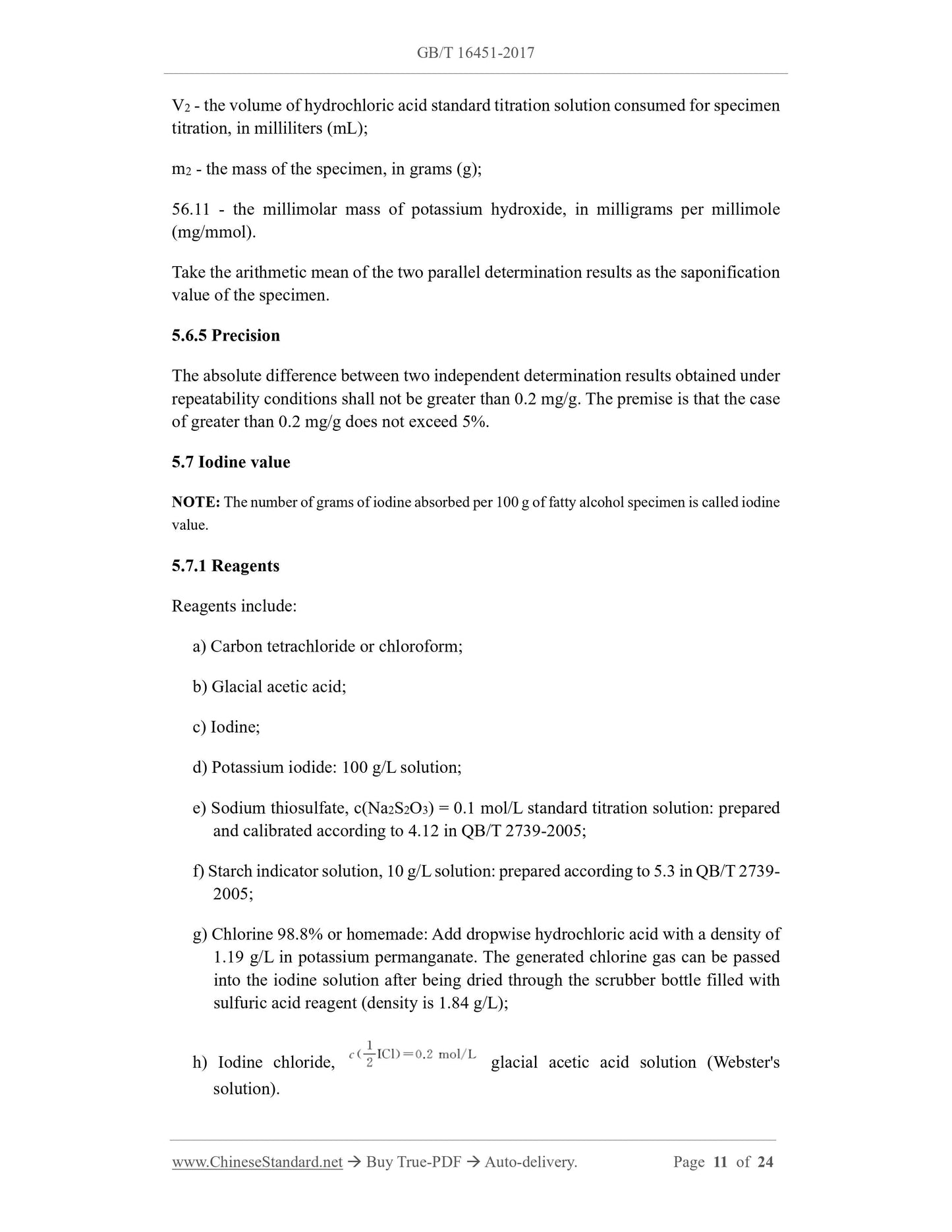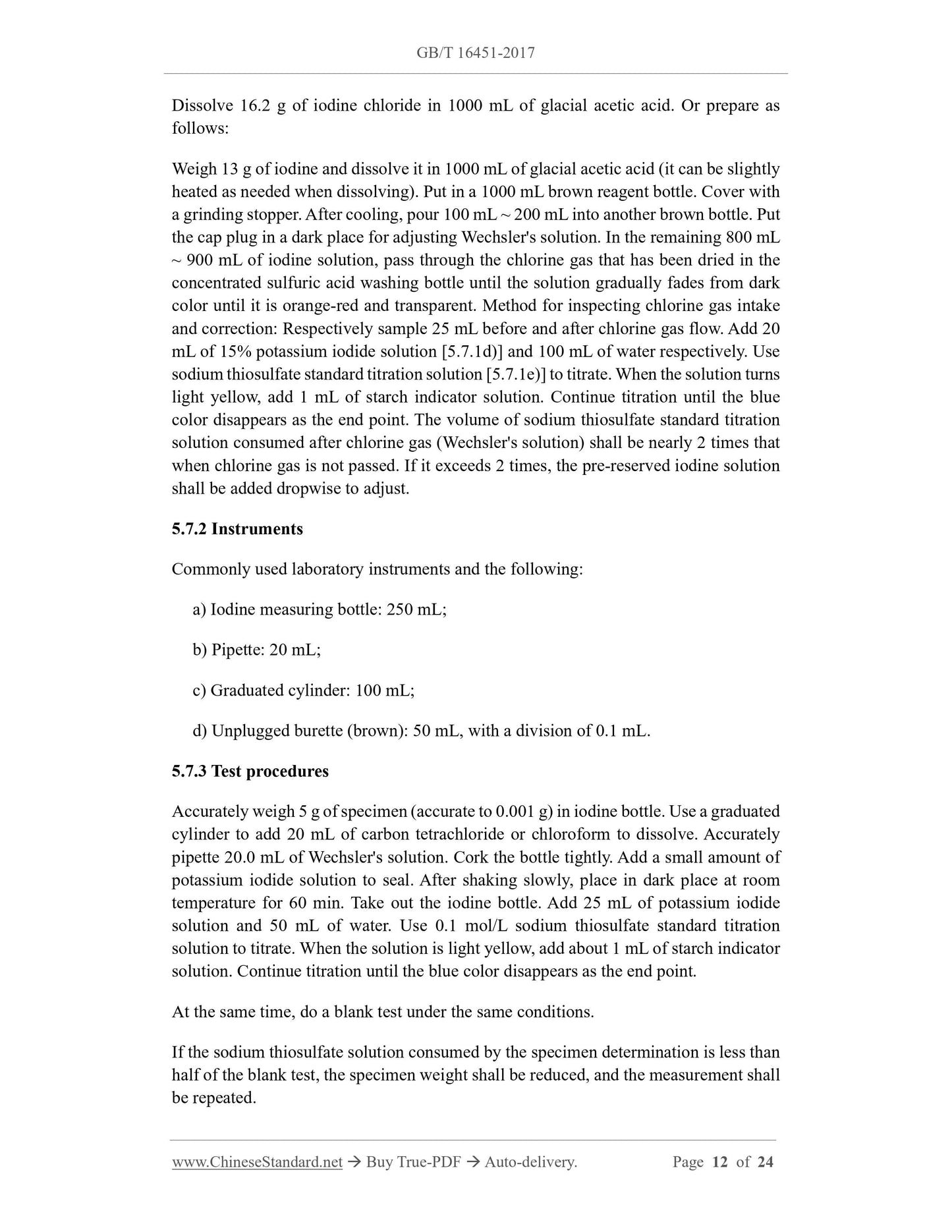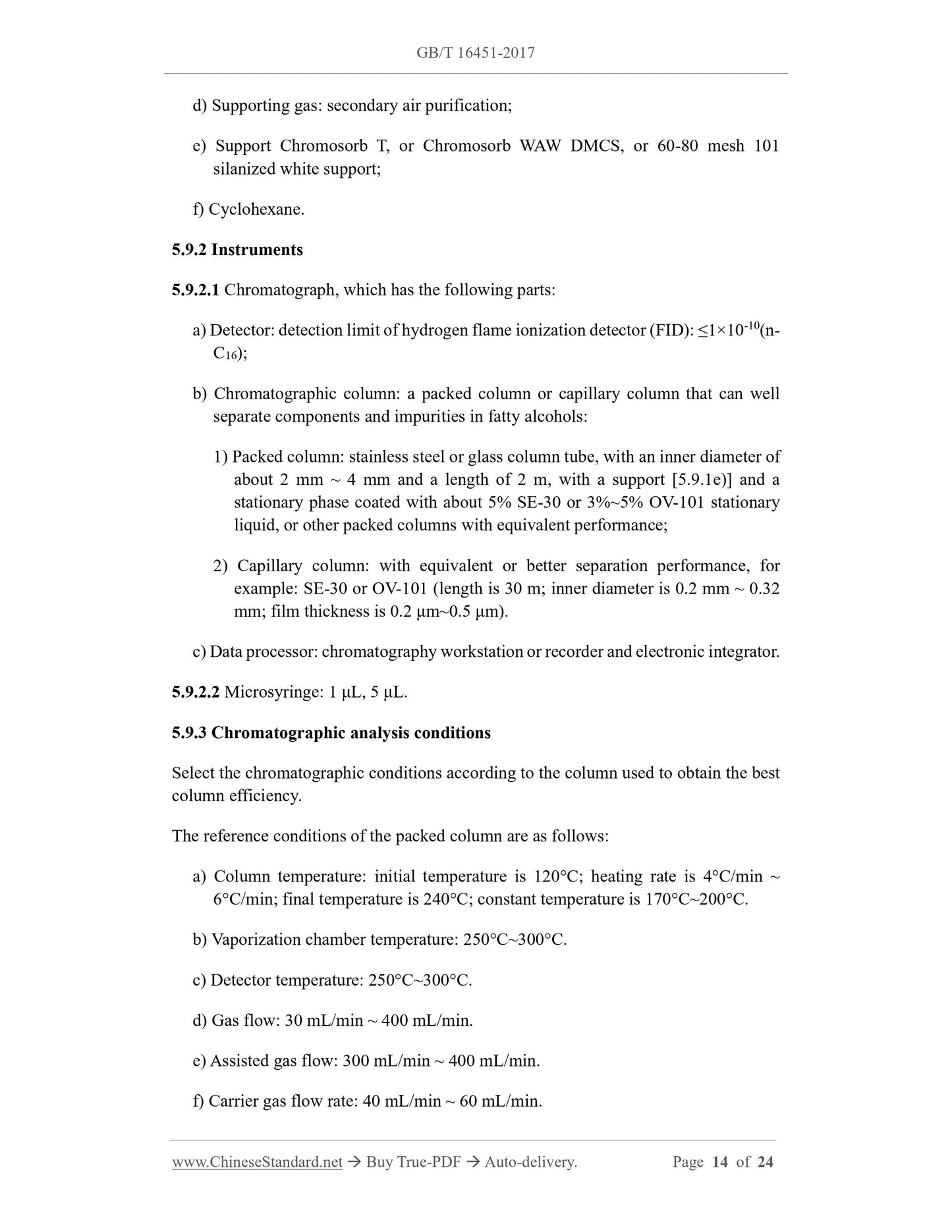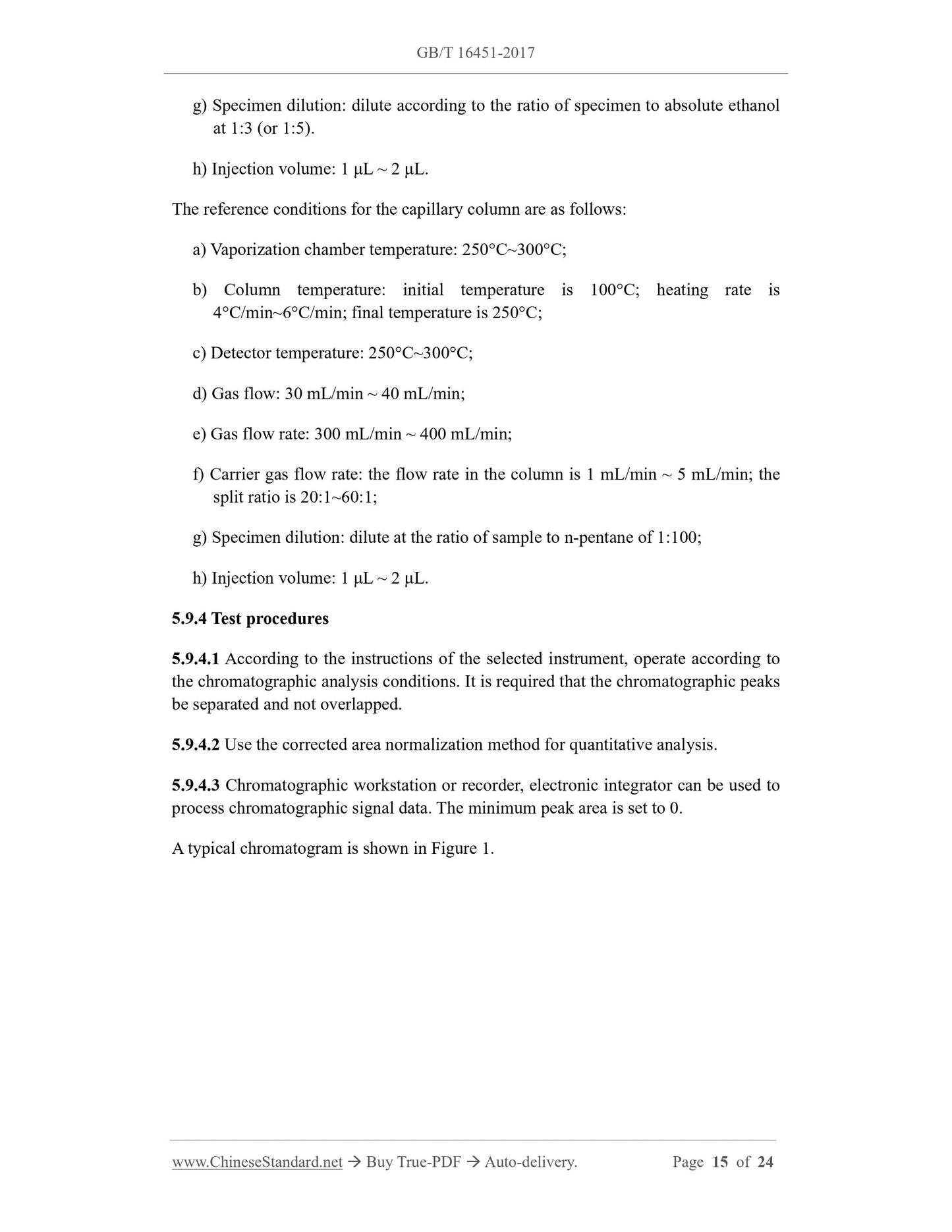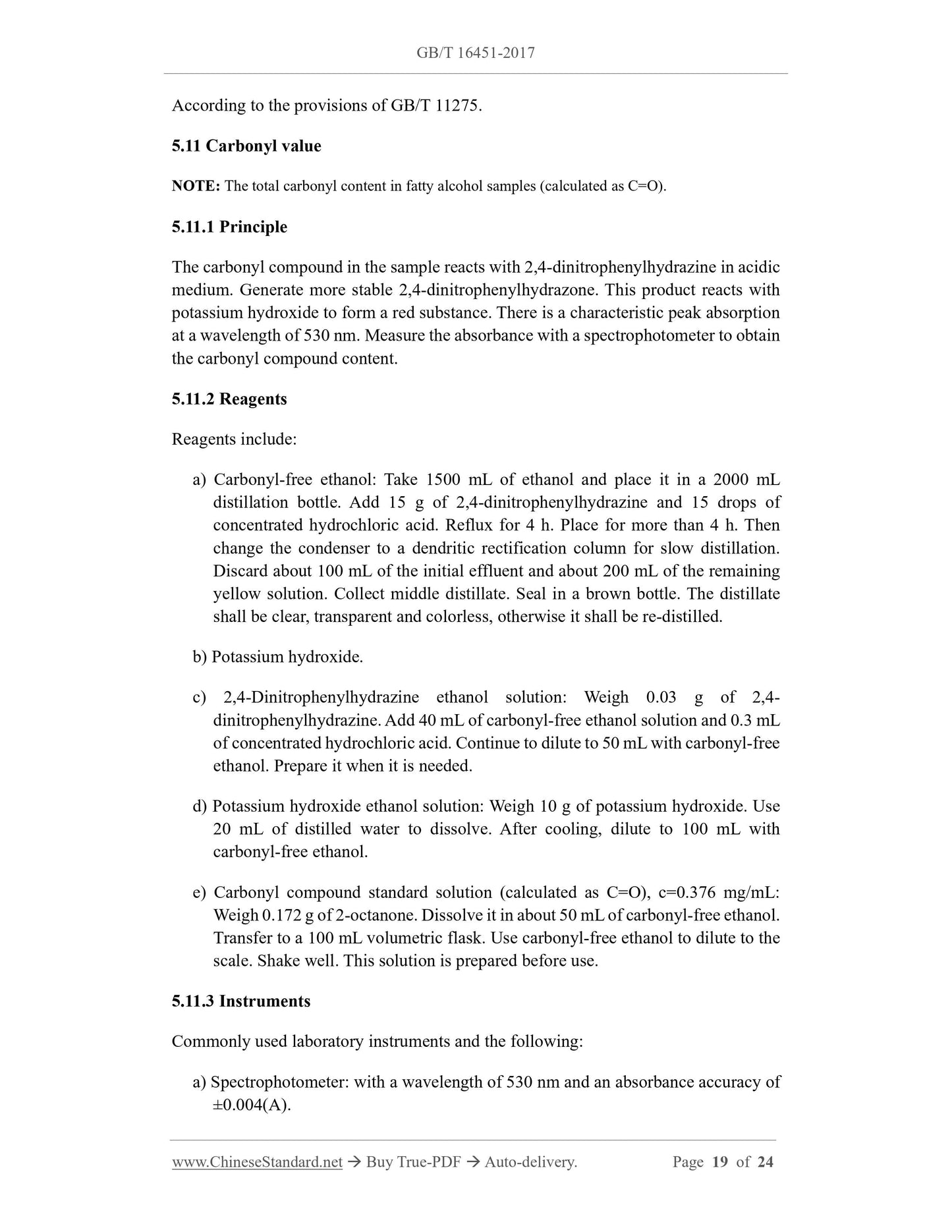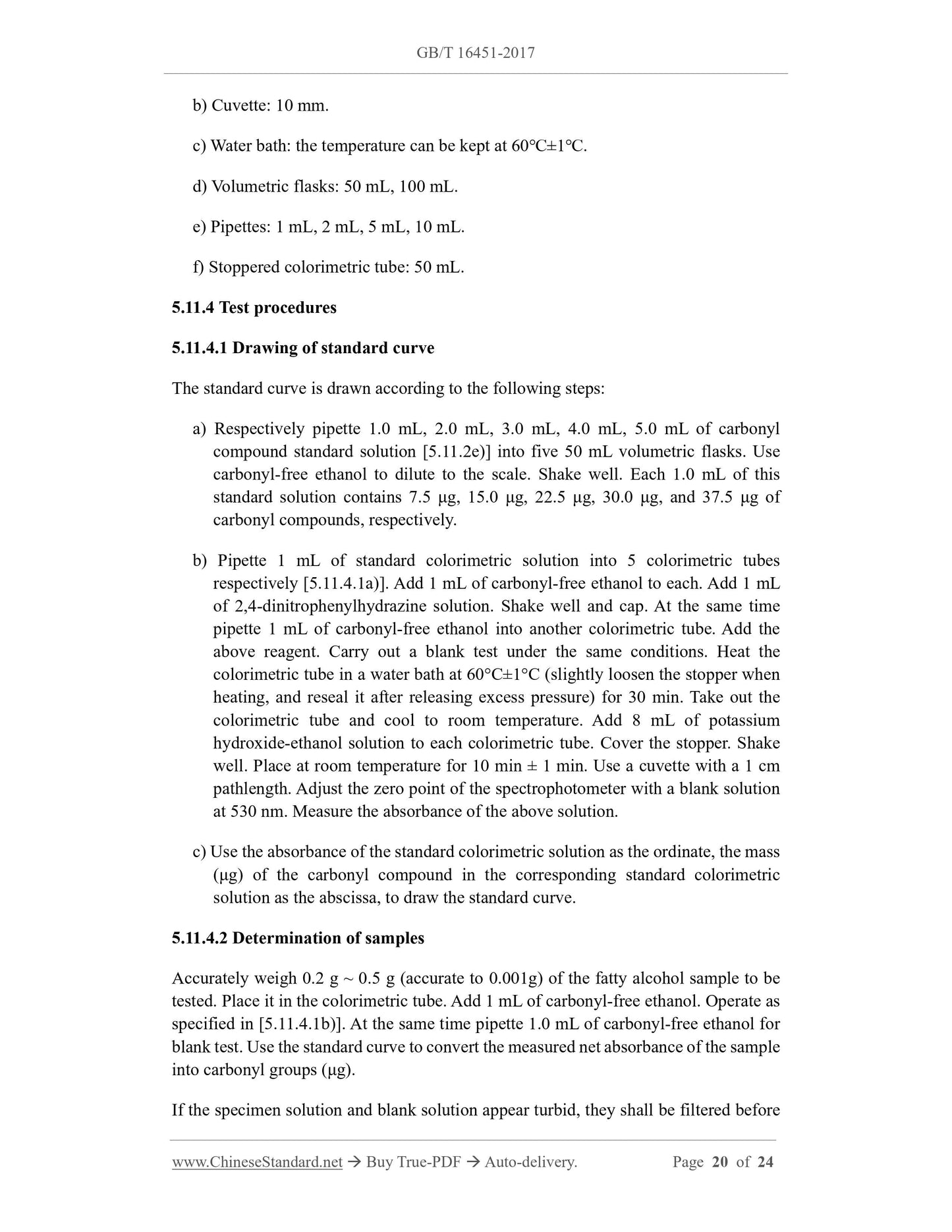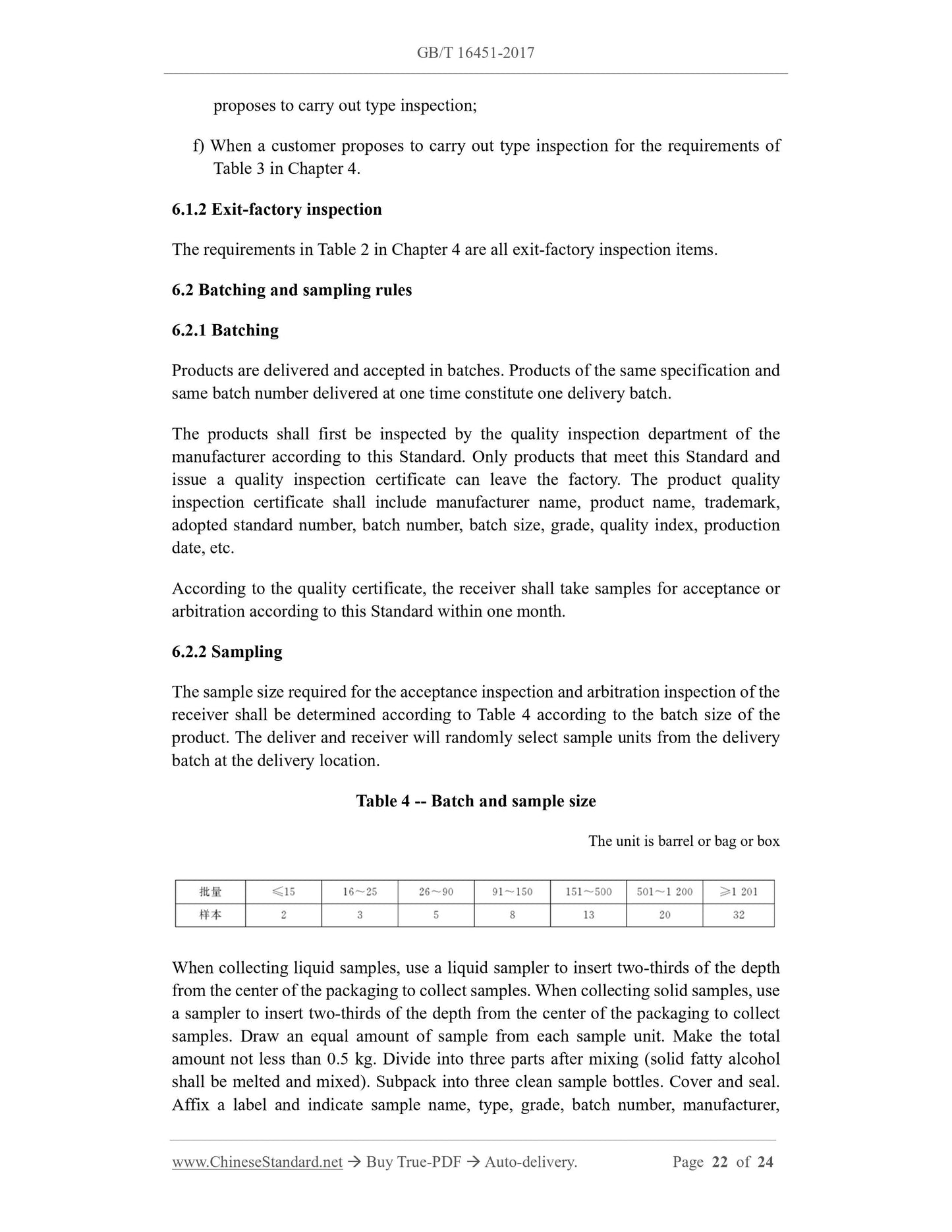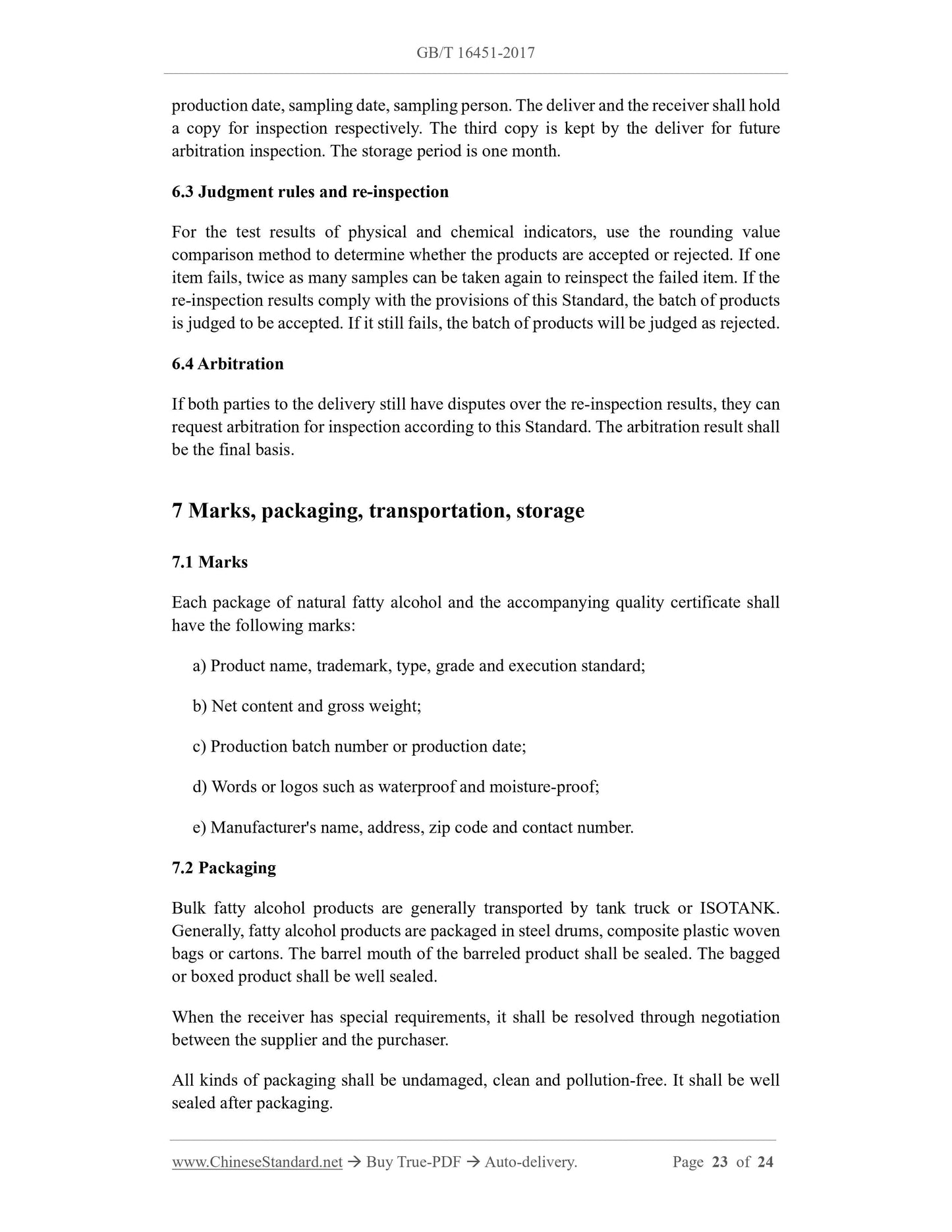1
/
of
12
www.ChineseStandard.us -- Field Test Asia Pte. Ltd.
GB/T 16451-2017 English PDF (GB/T16451-2017)
GB/T 16451-2017 English PDF (GB/T16451-2017)
Regular price
$255.00
Regular price
Sale price
$255.00
Unit price
/
per
Shipping calculated at checkout.
Couldn't load pickup availability
GB/T 16451-2017: Natural fatty alcohols
Delivery: 9 seconds. Download (and Email) true-PDF + Invoice.Get Quotation: Click GB/T 16451-2017 (Self-service in 1-minute)
Newer / historical versions: GB/T 16451-2017
Preview True-PDF
Scope
This Standard specifies the product classification, requirements, test methods,inspection rules and marks, packaging, transportation and storage for natural fatty
alcohols.
This Standard is applicable to a series of fatty primary alcohol products obtained from
natural vegetable oils and their derivatives through alcoholysis or hydrolysis,
esterification, hydrogenation and distillation.
Basic Data
| Standard ID | GB/T 16451-2017 (GB/T16451-2017) |
| Description (Translated English) | Natural fatty alcohols |
| Sector / Industry | National Standard (Recommended) |
| Classification of Chinese Standard | G17 |
| Classification of International Standard | 71.080.60 |
| Word Count Estimation | 18,187 |
| Date of Issue | 2017-12-29 |
| Date of Implementation | 2018-07-01 |
| Older Standard (superseded by this standard) | GB/T 16451-2008 |
| Regulation (derived from) | National Standards Bulletin 2017 No. 32 |
| Issuing agency(ies) | General Administration of Quality Supervision, Inspection and Quarantine of the People's Republic of China, Standardization Administration of the People's Republic of China |
Share
